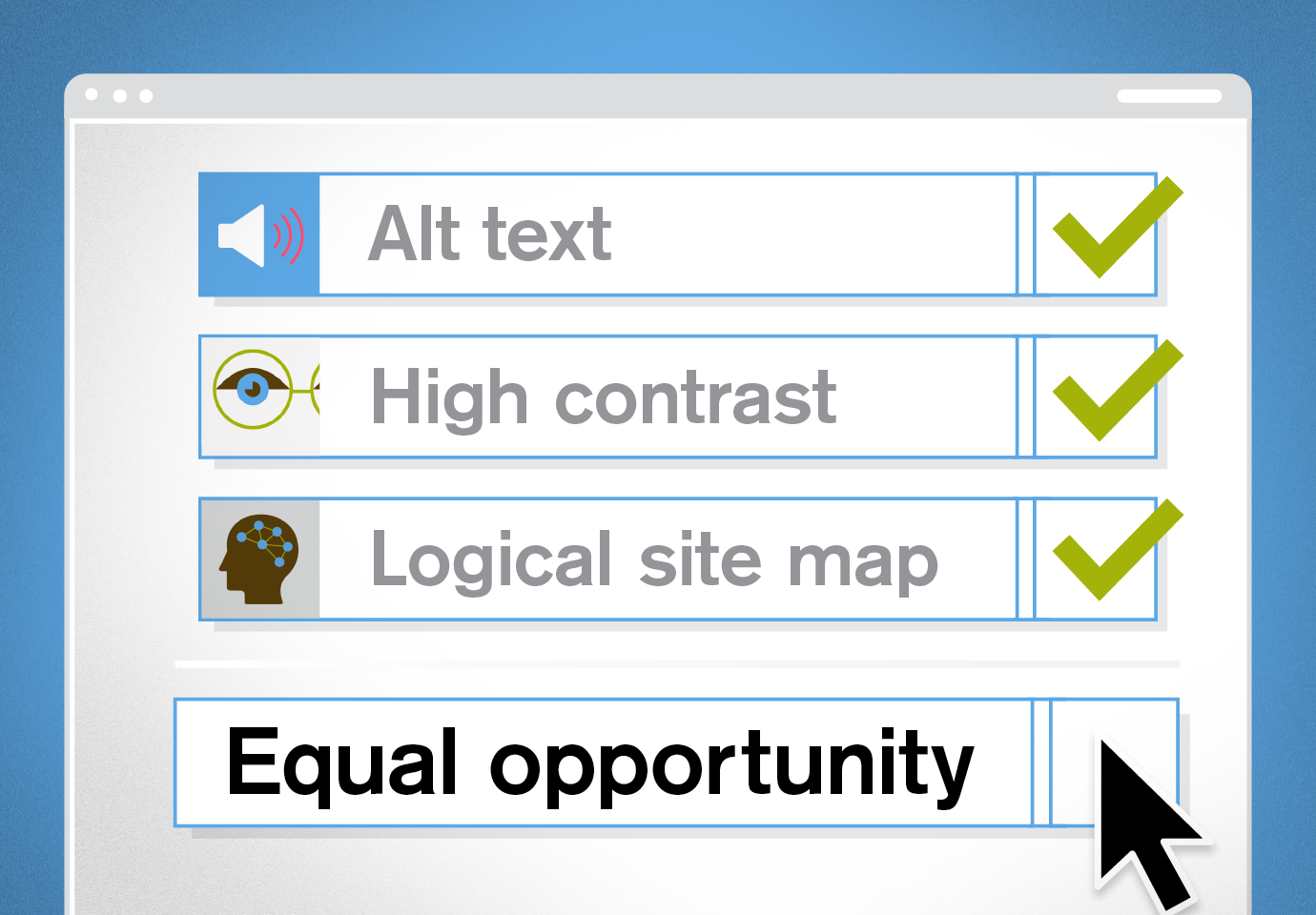ADA web compliance: Essential to equal opportunity employment

It’s standard practice for HR departments to include the line, “we are an equal opportunity employer” when advertising a job opening. But many are failing to deliver on that promise when it comes to even the very first step in the recruiting process: a candidate’s visit to the company’s website.
If a website doesn’t meet accessibility standards, people with hearing, sight, and some motion impairments, as well as those with cognitive, learning, and language disabilities, may not be able to access the website in full or at all. This is a barrier to employment for these folks because it hinders them from learning about the company in order to adequately prepare for their interview, or even learning if they’re interested in applying to the job in the first place.
What does ADA web compliance mean?
The ADA Standards for Accessible Design is an extension of the Americans with Disabilities Act. It was passed in 2010 to expand protections for people with disabilities to spaces that require “public accommodation.” The law was designed to evolve with society. With the dawn of the Internet, the concept of “public space” expanded from accommodations in physical spaces to include online platforms and technologies. Today, all electronic and information technologies, like websites and mobile applications, must be accessible to people with disabilities.
For businesses and employers, having a website that complies with the ADA means ensuring it is accessible to users with disabilities. For example: just as providing a wheelchair-accessible bathroom in your office is part of providing equal employment opportunity, ensuring your website can be read with a screen reader by a person with a visual impairment is as well.
Problems with the org chart
Why is a lack of ADA web compliance so rampant in business today? The problem might lie with how businesses are organized. Website design often falls under the marketing department’s purview, whereas the backend technology falls under that of the IT systems team. Neither of these groups may be thinking about equal employment opportunity certification (EEOC) and ADA compliance, which the human resources department oversees. So the problem won’t get fixed until ADA compliance is on the marketing department and IT team’s radars — and they understand what ADA compliance encompasses.
Three levels of compliance
While the ADA doesn’t provide set guidelines for businesses to follow, the industry standard is to follow the Web Content Accessibility Guidelines (WCAG), which lay out best practices for improved digital accessibility. Within these guidelines, there are three levels of compliance:
- Level A is a bare minimum level of accessibility.
- Level AA deals with the biggest and most common barriers for users with disabilities and is the standard many government agencies are using as a benchmark. We aim for AA compliance on all of our web projects because it meets the critical needs of people with disabilities while also balancing the capacity of our clients’ resources.
- Level AAA is the highest — and most complex — level of web accessibility. We recommend this level of compliance for organizations whose focus or mission is to serve an audience with a particular disability.
Adhering to the WCAG criteria means your website is:
- Perceivable: easy to understand through text alternatives, such as audio for those with vision impairment
- Operable: easy to operate with keyboard accessibilities for navigation
- Understandable: easy to understand through readable, predictable content with input assistance when needed
- Robust: easy compatibility with assistive technologies for content interpretation
The basics of compliance
To bring your website into compliance, you may, among other things, need to:
- Evaluate and revise your brand palette to create adequate color contrast for easy sight recognition
- Write alt text for images and graphics for screen readers
- Provide a sitemap and consistent web navigation for intuitive screening
- Write headlines and subheadlines that are to-the-point for assistive technologies to easily screen
- Caption videos or provide transcripts of them for people who are deaf, partially deaf, or struggle with auditory processing
- Work with your development team to ensure the code is accessible to screen readers
To learn more about meeting these standards, read our article on ADA web compliance and how it benefits your brand.
For a complete list of accessibility requirements, download our Web Accessibility Compliance Checklist.
Testing for compliance
Once you’ve evaluated and modified your site according to WCAG and used a compliance checklist to double check it all, we recommend running your site through internet accessibility checkers, such as:
- The Web Accessibility Evaluation Tool, which will return an overview of how well your website stands up against the WCAG A/AA checkpoints
- A screen reader to check that all content is being accurately translated
- A color contrast accessibility validator to ensure screen text is legible
Finally, conducting a manual self-check will help you experience and evaluate your website’s function from a user’s perspective. Test your site’s zoom function and navigate each page without a mouse, using only the tab and arrow keys, to make sure it’s keyboard friendly.
The key takeaway
When it comes to making employment opportunities accessible to people with disabilities, ensuring your website is ADA compliant is an important step. Not only will meeting this standard make your website stronger from a strategic standpoint (not to mention a legal one), but it will also help create truly equal employment opportunities, adding more qualified candidates to your talent pool. It takes the marketing, IT, and human resources departments understanding the importance of compliance and working together to make it happen.